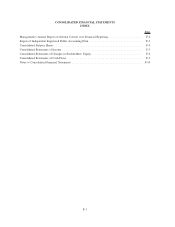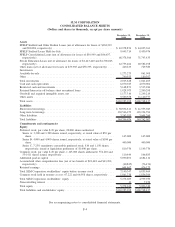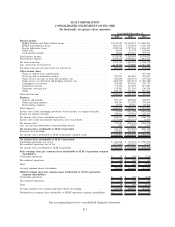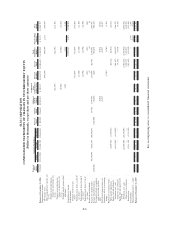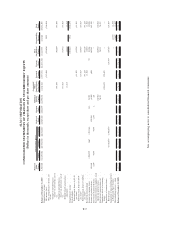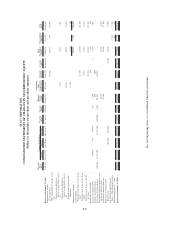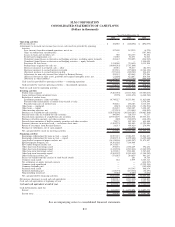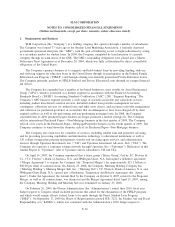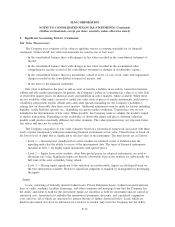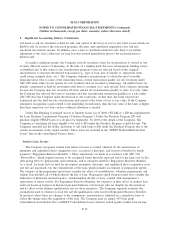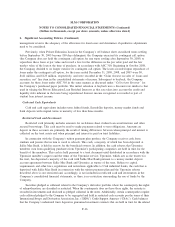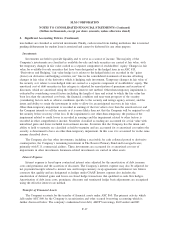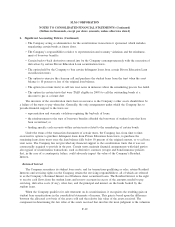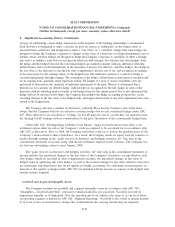Sallie Mae 2009 Annual Report Download - page 138
Download and view the complete annual report
Please find page 138 of the 2009 Sallie Mae annual report below. You can navigate through the pages in the report by either clicking on the pages listed below, or by using the keyword search tool below to find specific information within the annual report.1. Organization and Business (Continued)
Congress. If it became law SAFRA would eliminate the FFELP and require that, after July 1, 2010, all new
federal loans be made through the DSLP. The Administration’s 2011 fiscal year budget continued these
requests.
The Senate has not yet introduced legislation on this issue. The Company, together with other members
of the student loan community, has been working with members of Congress to enhance SAFRA to allow
students and schools to continue to choose their loan originator and to require servicers to share in the risk of
loan default. This proposal is referred to as the “Community Proposal” because it has the widespread support
of the student lending community, which includes lenders, Guarantors, financial aid advisors and others. The
Company believes that maintaining competition in the student loan programs and requiring participants to
assume a portion of the risk inherent in the program, two of the major tenets of the Community Proposal,
would result in a more efficient and cost effective program that better serves students, schools, ED and
taxpayers.
2. Significant Accounting Policies
Consolidation
The consolidated financial statements include the accounts of SLM Corporation and its majority-owned
and controlled subsidiaries and those Variable Interest Entities (“VIEs”) for which SLM Corporation is the
primary beneficiary, after eliminating the effects of intercompany accounts and transactions.
ASC 810, “Consolidation,” requires VIEs to be consolidated by their primary beneficiaries. A VIE exists
when either the total equity investment at risk is not sufficient to permit the entity to finance its activities by
itself, or the equity investors lack one of three characteristics associated with owning a controlling financial
interest. Those characteristics are the direct or indirect ability to make decisions about an entity’s activities
that have a significant impact on the success of the entity, the obligation to absorb the expected losses of an
entity, and the rights to receive the expected residual returns of the entity.
As further discussed in Note 8, “Student Loan Securitization,” the Company does not consolidate any
qualifying special purpose entities (“QSPEs”) created for securitization purposes in accordance with ASC 860,
“Transfers and Servicing.” All of the Company’s off-balance sheet securitizations meet the definition of a
QSPE and are not consolidated. The Company’s accounting treatment for its on-balance sheet securitizations,
which are not QSPEs, are governed by ASC 810 and are consolidated in the accompanying financial
statements as the Company is the primary beneficiary.
Use of Estimates
The Company’s financial reporting and accounting policies conform to generally accepted accounting
principles in the United States of America (“GAAP”). The preparation of financial statements in conformity
with GAAP requires management to make estimates and assumptions that affect the reported amounts of
assets and liabilities and disclosure of contingent assets and liabilities at the date of the financial statements
and the reported amounts of revenues and expenses during the reporting period. Actual results could differ
from those estimates. Key accounting policies that include significant judgments and estimates include
valuation and income recognition related to allowance for loan losses, loan effective interest rate method
(student loan premiums and discounts), fair value measurements, securitization activities (gain on sale and the
related Retained Interest), and derivative accounting.
F-11
SLM CORPORATION
NOTES TO CONSOLIDATED FINANCIAL STATEMENTS (Continued)
(Dollars in thousands, except per share amounts, unless otherwise stated)


